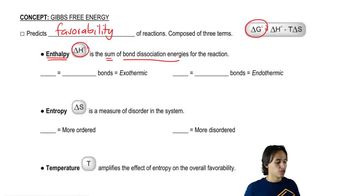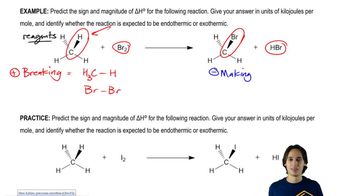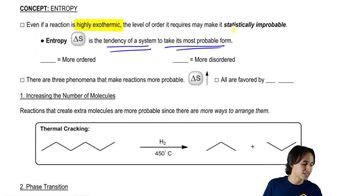(ii) Which side of the reaction is favored by entropy? (iii) If ∆S° = 0 for these reactions, calculate ∆G° (Assume T = 298 K) [BDE for O―H = 110 kcal /mol.]
(b)

 Verified step by step guidance
Verified step by step guidance Verified video answer for a similar problem:
Verified video answer for a similar problem:



 2:46m
2:46mMaster Explaining what entropy is. with a bite sized video explanation from Johnny
Start learning